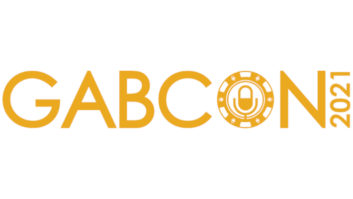Is Internet Radio or Satellite Radio The Greater Threat – And to Whom?
Many of the competitive concerns on broadcasters’ minds today involve fear of satellite radio’s further incursion into a marketplace formerly held exclusively by terrestrial AM and FM stations.
It’s easy to downplay the similar threat from Internet radio, because it seems like such a different animal. Internet radio also occupies a different venue – given its predominant usage on computers today – whereas satellite radio lives primarily on a multiband (AM-FM-satellite) receiver; so its directly competitive nature to traditional radio is overt and in plain sight. Further, satellite radio is actively stealing talent and other content (such as major league sports), and even some advertising dollars, from terrestrial radio.
In its stealthy way, however, Internet radio continues to pose a threat, which ultimately could deal an even more damaging blow to the prospects of terrestrial radio in a digital world. Yet if properly managed by broadcasters, Internet radio can become an ally.
The enemy of my enemy …
One of Internet radio’s biggest advantages over satellite radio is the lack of a requirement for any new hardware purchases by consumers.
Internet radio leverages the world’s existing personal computers, and – although it works on any Internet connection, including dialup – the rapidly growing worldwide broadband penetration has greatly increased the value of Internet radio. Most Internet radio services also do not require a subscription, making them far more accessible for sampling (and ultimately more palatable) to traditional radio listeners.
While the old canard that a computer doesn’t make a very good radio (or book) remains true, the proliferation of laptops and WiFi have lessened the power of this contention somewhat through their closer approximation of traditional radio’s portability. Nevertheless, radio still holds a considerable edge in form factor and cost-effectiveness when it comes to mobility.
There are also more than 2 billion radio receivers out there, a lot more than there are computers. But when it comes to satellite or HD Radio, consumers need to buy new equipment from scratch, and there are a lot more computers in use that can hear Internet radio today than there are satellite or HD receivers. (Consider that HD Radio is an upgrade process for most broadcasters, but it’s a replacement exercise for listeners.)
By such “availability” analysis, it’s clear that Internet radio is in the strong second position, with satellite radio lagging behind. For now at least, HD Radio isn’t even on the chart yet.
Then there is the appliance factor. Notwithstanding the point just made regarding Internet radio’s leveraging of existing hardware, there is continuing, slow growth among devices that serve as “Internet radios.” Many of these double as MP3 players, either as audio-only nodes of a home media network (like the Roku Soundbridge), or as standalone WiFi radios (like the handheld Music Gremlin, or British manufacturer Acoustic Energy’s tabletop design, the AE WiFi Radio).
Thus the Internet radio trend also leverages the popular movement toward digital music, both in hardware and at service sites.
This latter category has come a long way since Kerbango, but the concept remains an appealing one. You don’t need a full PC to receive Internet radio, just a barebones device that can access one default Web site (the device maker’s master site), which in turn populates the device’s limited display with navigation info on the current list of streaming stations available. The device can then be “tuned” to any of those services much like a traditional radio.
What’s really different about today’s latest models is their broadband, and particularly, their wireless capabilities, bringing them ever closer to duplicating real radio’s functionality. It’s conceivable that the differences between regular terrestrial broadcast radios and Internet radio appliances will continue to dwindle until they are negligible, and most listeners don’t even notice the difference. The coming of WiMax and Mobile WiMax service may speed this transition.
Services proliferate
Again in sharp contrast to satellite – or even terrestrial – radio, the Internet is a wide-open marketplace, allowing many operators and types of services to co-exist.
The range that exists today is enormous, from the simple duplication of terrestrial and satellite radio streams (the latter by subscription), to the creation of Internet-only streams (by on-air broadcasters as well as Internet-only providers – from all over the world), to the development of large aggregation sites with dozens of streams. The latter approximate the satellite radio model, with some even duplicating satellite radio’s subscription model. There are also interactive and peer-to-peer distributed streams that serve as hybrids between radio and on-demand services.
An important component of all of these approaches is the incremental growth opportunity they afford to their providers. Internet broadcasters and content aggregators can build their online radio services gradually, adapting to fast-changing audience needs and trends, and adjusting business models accordingly. Therefore growth or tweaks of an operator’s online offerings can occur continuously, and without playing the zero-sum bandwidth game required by IBOC multicasting, or plunking down the vast up-front sums required to launch a satellite service.
Eventually, an operator may “get it right” and hit a sweet spot that optimizes audience satisfaction with revenue-generating potential. (Remember that it took broadcast radio a while to find its proper fortunes, too.)
Another key factor: Real-time streaming audio is only one mode of service available on Internet radio. On-demand streaming, downloads and podcasts are also possible, with free, ad-supported, a la carte purchase or subscription models applicable to any or all of them.
This high degree of flexibility and scalability may become the greatest advantage of Internet radio, and could ultimately bring it to a dominant position in the digital media game. In fact, some of the most popular online radio streams are ancillary services found at online music sites. Users discover these services when they come to the sites to purchase music, and site operators use them to introduce new music to customers.
Note that satellite radio operators are now trying to enter that game from the opposite direction, by offering devices and services that add music recording, downloading and purchasing options to their suite of services – albeit incurring the wrath of the recording industry in the process.
The good news for terrestrial broadcasters is that they can easily hedge their bets and get into the online services game alongside Internet-only providers, while using their on-air signals for cross-promotion of any Internet radio channels they choose to offer. (Of course, the Internet-only providers do not have the inverse option.)
On the other hand, satellite radio is largely closed to any such terrestrial broadcasters’ participation. But as Internet radio’s star rises, it naturally thwarts satellite radio’s growth. Thus by joining the Internet radio party, terrestrial broadcasters may indirectly keep the competitive forces of the Death Star at bay.
Ultimately, Internet radio may therefore have more negative impact on satellite radio than it does on terrestrial radio. (While both satellite and terrestrial radio can use Internet radio for ancillary purposes, the free culture of the Internet is far more congruent with broadcast radio’s free access than it is with the subscription model preferred by satellite operators.)
Thus local radio should explore the ever-expanding Internet radio environment. If its success continues, terrestrial radio broadcasters could share its wealth, and protect their businesses’ future stability in the bargain.
Comment on this or any article to [email protected].












